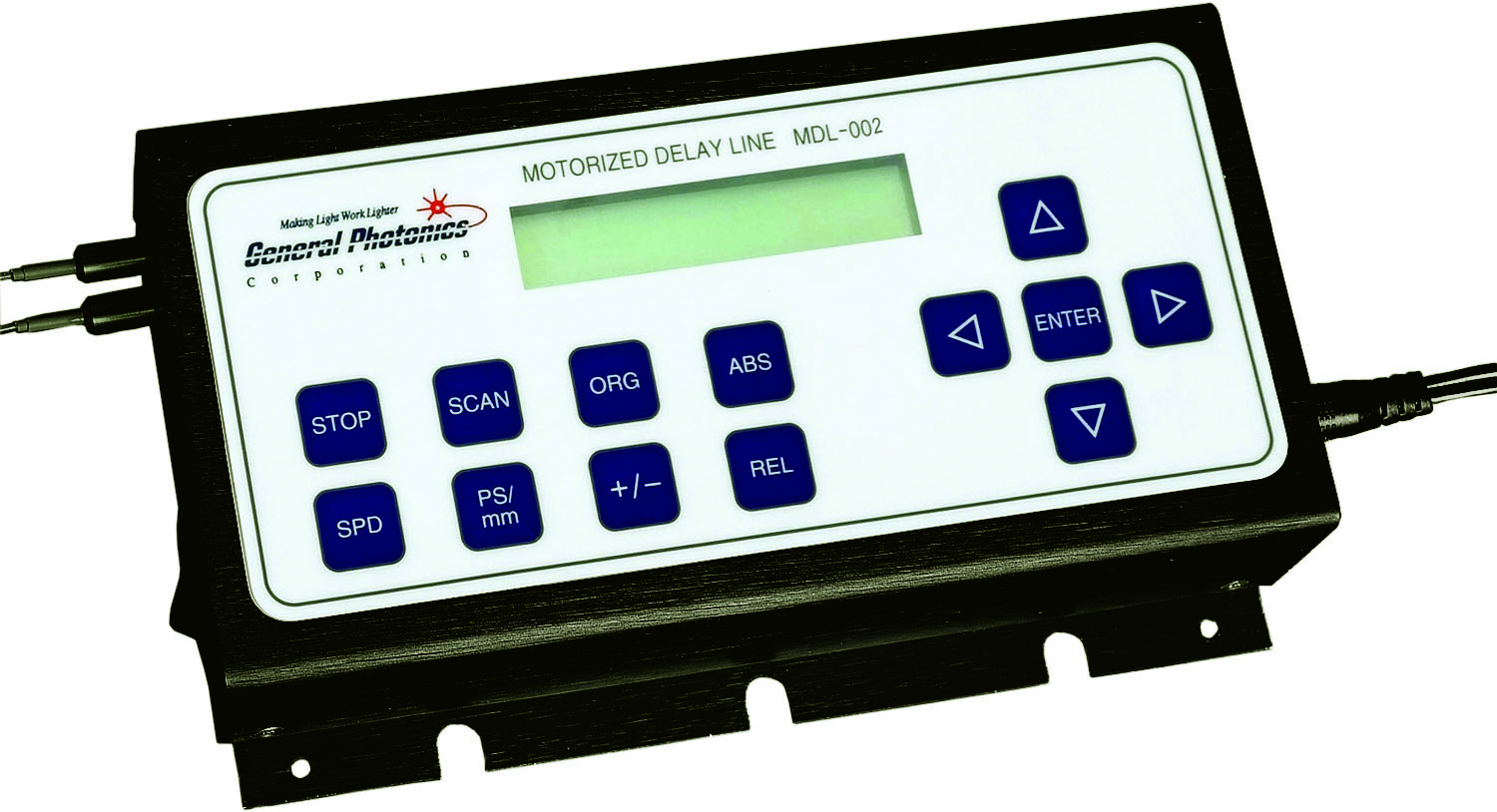Fiber Optic Delay Lines
Product Portfolio
AMS Technologies carries a broad range of fixed or variable fiber optic delay lines, operated manually or motorized.
A series of fiber optic delay lines is available comprising of devices that consist of single mode (SM), multi mode (MM) or polarization maintaining input and output fiber collimators to project the light into free space and collect it again into a fiber. By varying the distance the light travels, the user can control the delay time through the device – both manual and electrically controlled versions utilizing a servo motor can be ordered.
Compact and rugged manual variable optical delay lines provide precision optical path variation of up to 1200 ps, with two even smaller, miniaturized versions still providing up to 250 ps or up to 260 ps respectively. These devices are ideal for integration in network equipment, test instruments and optical coherence tomography (OCT) systems for precision optical path length or timing alignment.
Motorized variable fiber optic optical delay lines allow optical path length adjustment of up to 560 ps in a single pass. Driven by a DC motor with an integrated encoder, these devices are available as an integrated bench-top instrument for laboratory applications, as a two-piece unit for installation into customer equipment or as an OEM version with miniature controller board. With a total volume of 16.4 cm3, the smallest delay line in this series is specifically designed for OEM applications that require continuous scanning capability and a small footprint.
Fixed differential group delays (DGD) add defined amounts of first order polarization mode dispersion (PMD) to a polarization maintaining (PM) fiber system without having to precisely measure the PM fiber’s length.
Related Products
Our fiber optic delay lines can be used with our broad range of optical fibers, patch cables, bundles and assemblies, driven by our various lasers and light sources.
Beyond fiber optic circulators, further fiber components are available like collimators and focusers, light to fiber couplers/collimators, fiber connectors, mating sleeves and adapters, fiber WDMs, combiners, splitters and couplers, fiber amplifiers, attenuators or polarization controllers, as well as fiber optic switches, circulators, filters, isolators and other fiber optic assemblies.
Our portfolio of precision optics includes optical lenses, optics assemblies, optical filters, optical prisms, optical mirrors, optical beamsplitters, etalons, optical gratings, optical isolators, optical attenuators and polarization optics as well as optical scanners and deflectors or optical modulators, q-switches and pockels cells.
For mounting, adjusting and moving our optical components with high precision, we carry an array of optomechanics and motion control such as optical mounts, rotary and translation stages plus motion controllers as well as optical tables, breadboards and platforms.
Definition
A fiber-optic delay line consists of an optical path of fixed or variable length – the time that the light needs to span this path corresponds to the delay value of the delay line. Fixed delays usually simply consist of an optical fiber with precisely defined length, wound into a coil.
In variable fiber-optic delay lines, on the other hand, the relevant distance usually runs in air – similar to pure free-space delay lines – resulting in a delay of about 3.34 ps per mm path length. Therefore, a distance of about 30 cm is needed for a delay of 1 ns, which means that the set-up can quickly become quite bulky if longer delays are required. In fiber-optic delay lines, collimators are located at the beginning and end of the path to focus the light exiting the input fiber and pick up the light entering the output fiber.
The distance between the two collimators is defined by a precision mechanism – in the case of variable delay lines the distance is adjusted either manually, for example by means of a (micrometer) spindle drive or electrically with the aid of motors – or piezos, if very small length variations are required.
In compact or miniaturized fiber optic delay lines with fiber connectors at both ends, the time delay can be selected via an adjustment knob. With such compact delay lines, a maximum of several 100 ps can be achieved – or twice the value if the internal optical path is extended by means of one or more mirrors.
Alternative Terms: Manual Fiber Optic Delay Line; Motorized Fiber Optic Delay Line; Variable Optical Delay Line; Manual Variable Optical Delay Line; Motorized Variable Optical Delay Line; Fixed Differential Group Delay (DGD)








